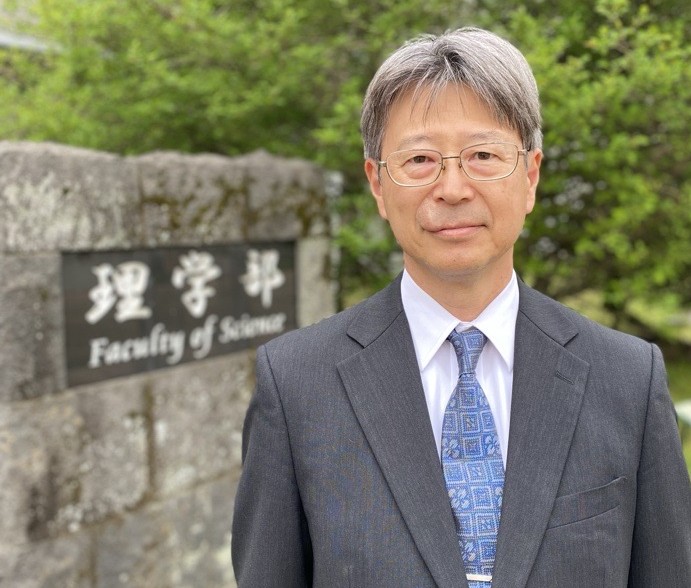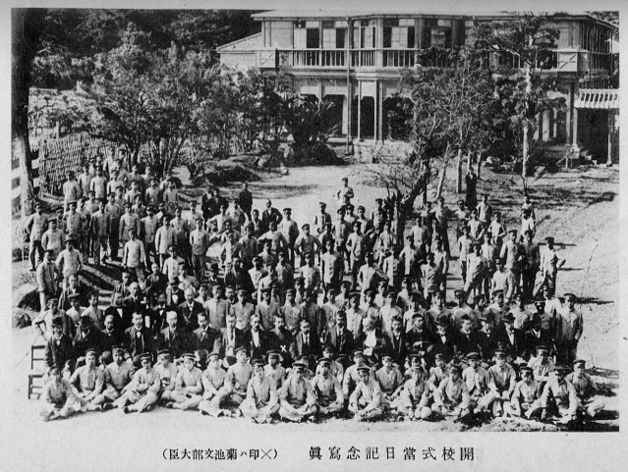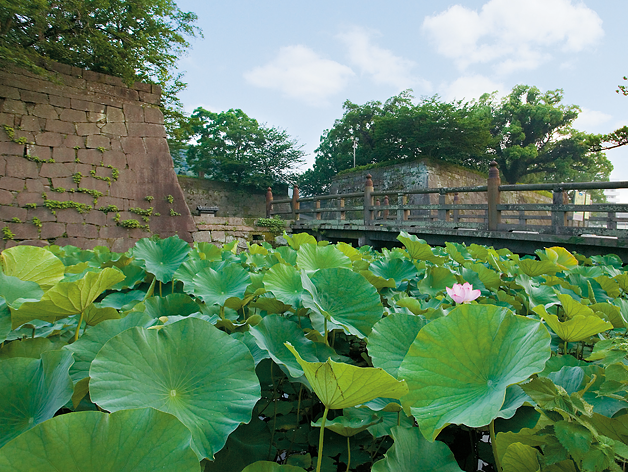
TOMIYASU Takashi (Ph.D.)
Dean & Professor of Chemistry Program
The tradition has been passed down to the Kagoshima University’s Faculty of Letters and Sciences to the Department of Science, and is continued till date to the current Faculty.
Well, what role does the Faculty of Science play?
Educational programs in Faculty of Science consist of “Mathematics and Informatics Program” for students interested in mathematics and informatics, “Physics and Astronomy Program” where students can study theoretical and experimental physics and astronomy, “Chemistry Program” to learn functional molecular chemistry, organic biochemistry, and environmental science, “Biology Program” to understand life function and diversity biology, and “Earth Science Program” for students to understand geological processes and island arc-related volcanology.
In our quest to find the truth that constitutes the world, the academic disciplines are formulated. Ultimately, in the Faculty of Science, students can study/research all the principles related to the universe and the reasons behind. Moreover, it can be said that it is a place where one can learn the art of exploring the truth.
Through the study of science/theory, students can not only gain the knowledge but can develop the ability to feel/discover the essence of things that are extremely useful in any situation. In fact, students of the Kagoshima University’s Faculty of Science grow up as researchers, educators, engineers, and so on after passing out from the faculty and are actively involved in contributing to a wide range of fields.
In addition, these days, there is an abundance of information that includes deliberately spread false information, the learnings at the Faculty of Science will give its students a standard for making logical decisions without losing sight of themselves.
The door to accumulate that power is now widely open before you. Take the first step and let’s walk together on the path of seeking the truth.
Science is an academic field in which efforts are made to find the truth that lurks in natural phenomena.
The natural laws revealed by science have accumulated in the database of human wisdom, supported the development of science and technology, and enriched our lives. However, rapid scientific progress also has bad influence and created new issues regarding our environment and energy. To overcome those challenges, it is essential to pursue scientific truths and develop science further from its basics. The Faculty of Science is blessed with natural geographical characteristics of the southern Kyushu and conducts the latest education and research in the fields of natural sciences.
The Faculty of Science aims to develop human resources and to equip them with the ability to grasp and solve various scientific problems.
For example:
Based on Kagoshima University’s policy of awarding degrees and the educational goals of the Faculty of Science, a bachelor’s degree will be granted to students who have acquired the following abilities and obtained the prescribed credits.
In order to develop human resources equipped with the abilities outlined in the diploma policy, the Faculty of Science will provide systematic curricula from the first year until graduation based on the following policy.
| March 1901 | Foundation of the Seventh Higher School (Zoshikan). |
| June 1945 | Burning of the school buildings due to a large-scale air raid, except some parts that survived. |
| January 1946 | Relocated of the school to Takaono village in Izumi, and reopening of the teaching activities. |
| September 1947 | Moving back to Kagoshima city. |
| May 1949 | Birth of various departments, e.g, The Faculty of Arts and Sciences, Faculty of Education, Faculty of Agriculture, and Faculty of Fisheries. The Faculty of Arts and Sciences comprised the Departments of Sociology, Literature, and Science. |
| April 1952 | Burning of the building of the General Education Department due to a large-scale fire. |
| 1955~ 1958 |
Moving to Korimoto Campus. |
| 1964 | Ministry of Education decided to reorganize the Faculty of Arts and Sciences in order to accommodate the first-generation baby boomers. |
| 1965 | The Faculty of Science was established comprising with four departments (Mathematics, Physics, Chemistry, and Geology). |
| 1976 | Department of Biology was added. |
| 1977 | Graduate School of Science (Master’s Course) was established. |
| 1986 | The enrollment capacity was temporarily expanded to respond the second-generation baby boom. |
| 1997 | With the abolition of the General Education Department, other departments were reorganized into four departments, i.e., Mathematics and Information Science, Physics and Astronomy, Chemistry and Bioscience, and Earth and Environmental Sciences. The teaching staff of natural sciences of the General Education Department were affiliated with the Faculty of Science. Courses were taught by several professors for large number of attendants. |
| 1998 | Integration of the Graduate school of Science and Graduate school of Engineering into the Graduate School of Science and Engineering (to conduct Master’s and Doctoral courses). |
| 2000 | Establishment of the VERA (VLBI Exploration of Radio Astrometry) observation station at Iriki town. |
| 2001 | Foundation of the graduate school in collaboration with the National Space Development Agency of Japan (NASDA) and the National Astronomical Observatory of Japan (NAOJ). |
| 2004 | Reorganized as the National University Corporation Kagoshima University |
| 2020 | Reorganization as a Department of Science of the Faculty of Science into five Programs (Mathematics and Informatics, Physics and Astronomy, Chemistry, Biology, and Earth Science). |

25 October 1901
Glimpse at the opening day of the Seventh Higher School (Zoshikan) at the front of the main building of the former Tsurumaru Castle.

Presently, the premise is used by the Kagoshima Prefectural Museum of Culture Reimeikan.